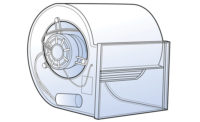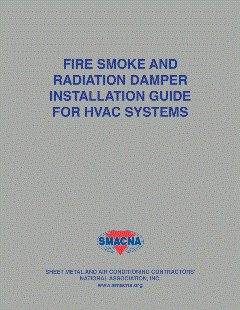A couple of months ago, I wrote about how to “Add Fan Airflow to Static Pressure Readings in Four Simple Steps.” In that article, I made a comment about pairing larger-tonnage fans with smaller-tonnage outdoor units that has drawn a lot of interest. This problem is frequently found with gas furnace and cooling systems, but it also exists on heat pumps when a large air handler is installed.
The two most frequent questions I received were “How do we look for this?” and “What can happen when this condition exists?” To answer these questions, let’s look at how we diagnosed and corrected a system with this problem a few years ago.
It’s important to point out that the homeowners’ only criticisms of their five-year-old system were excessive noise and that it didn’t cool like they felt it should. They had come to accept its condition, even though they felt something wasn’t right.
WALK THE SHIP
My buddy Vince DiFilippo of DiFilippo’s Service refers to one of the first steps to diagnosing system issues as “Walking the Ship.” When you walk the ship, you take the time up front to gather all of the necessary information before you test and offer solutions. A lot of issues appear when you slow down and perform this step at the beginning. As we look at the HVAC equipment, we should do the following:
- Record indoor and outdoor equipment model numbers.
- Find the air-handling equipment fan table in the installation manual.
- Interpret the outdoor model number to determine cooling tonnage.
- Determine fan tonnage from the indoor model number and installation manual.
- Identify the operating fan speed(s).
In the basement, we found an 80 percent AFUE, 75,000 Btu input upflow gas furnace with a 3-ton rated fan. The fan speed was set from the factory on the high-speed tap for cooling operation. The outdoor unit was a 13-SEER, 2-ton condenser. We just found our first clue to the excessive noise and inadequate cooling.
Once we determined the outdoor unit tonnage from its model number, we calculated required fan airflow. We used the industry standard for cooling airflow of 400 cfm per ton. Since the outdoor unit is rated at 2 tons, the fan must move around 800 cfm (400 cfm per ton X 2 = 800 cfm).
However, the furnace has a 3-ton fan with the cooling speed set to high. It has the potential to handle a 3-ton outdoor unit, but when a smaller-tonnage unit is installed, the fan speed can’t be left at factory settings. It must be changed to match the field installation.
This told us the fan was attempting to push 3 tons of airflow through an evaporator coil that only needs 2 tons of airflow. Remember, cooling airflow is based on the outdoor unit size.
FIELD TESTING PERFORMED
Now that we had a good idea what we would find, we took measurements to verify our suspicions. Remember, if you don’t measure, you’re just guessing. Total external static pressure (TESP) was the first test we performed. We used our static pressure testing kit at the furnace that includes:
- Manometer — analog or digital.
- Static pressure tips and tubing — neoprene or silicone.
- 3/8-inch test port plugs.
- Small drill/impact gun with a unibit and 3/8-inch drill bit with a sheath/stop.
- Thin screwdriver — for cleaning out internal duct insulation.
Next, we installed test ports in the furnace to measure static pressures. On a gas furnace with the filter mounted in a filter rack, the test port locations in Figure 1 work best.
Once we installed the ports, we turned the system to cooling mode and made sure it ran for approximately 10 minutes before taking any static pressure measurements. This gives the system enough run time to get the indoor coil wet and ensures the fan is operating at full speed.
DIAGNOSTICS
Our static pressure tests revealed a TESP reading of .72 inches of water column (in. w.c.) on a furnace with a maximum rated TESP of .50 in. w.c. If we stopped at this point, we might have been fooled into thinking the furnace was low on airflow due to excessive TESP.
We decided to go one step further and plot fan airflow on the manufacturer’s fan table, so we could see how much air the furnace was moving. With a measured TESP of .72 on high speed, the fan was moving 980 cfm (roughly 2.5 tons of air) for a 2-ton condenser. We only needed 800 cfm for this system to operate correctly. Our pressures were excessive because the fan speed was set incorrectly for the installed outdoor unit.
After doing a quick percentage of required fan airflow calculation, we found the fan was moving 123 percent of its required airflow (980 cfm ÷ 800 cfm = 123 percent). A properly operating fan should deliver ±10 percent of required airflow, near the equipment’s maximum-rated TESP.
THE CORRECTION
Now that we knew about the excessive airflow, it was time to turn off power to the gas furnace and remove its doors. Since we were already on high speed, we knew our cooling fan speed tap would have to be adjusted down to a lower speed. Our options were medium-high, medium-low, and low speed. We looked at the fan table to make an educated guess about which fan speed we would choose.
According to the manufacturer fan table, medium-high would still move too much airflow for a 2-ton condenser, so we decided to go with medium-low as the fan speed of choice. We removed the high-speed fan wire from the cooling tap and replaced it with the medium-low fan speed wire. The high-speed fan tap was placed on the board’s park terminal. A clean air filter was also installed after we made our fan speed adjustments.
We turned the system back to cooling mode and let it run again for about 10 minutes before taking any pressure measurements. Our new measured TESP was .56 in. w.c., with plotted fan airflow of 750 cfm. We were now within ±10 percent of required airflow for the 2-ton condenser.
Our readings weren’t perfect, but we got close to the results we needed without major system modifications. The noise issues and lack of cooling due to excessive airflow across the coil disappeared once the fan speed was adjusted. The homeowner noticed the difference before we left and was amazed something so small could make such a big difference.
OTHER PROBLEMS AND REPAIRS
While this situation has a simple fix, there are other problems you might find associated with larger-tonnage fans that are set incorrectly. Some of the most common problems are:
- Continuous equipment problems and failure.
- Condensate issues with the evaporator coil (blow-off and drainage).
- Elevated humidity levels.
- Low temperature drop in cooling mode.
- Excessive noise from registers and grilles.
- Drafts.
Each of these issues offers you an opportunity to step in and be the hero. A simple and quick static pressure test enables you to plot fan airflow and verify or eliminate a larger-tonnage fan as a potential suspect.
Publication date: 4/29/2019
Want more HVAC industry news and information? Join The NEWS on Facebook, Twitter, and LinkedIn today!











